When we purchased our garden, Timandra, in 2008, there was already a garden on the upper level of the property. The previous owners had formed this garden out of many different plants that mostly grew from seed, under a considerable tree canopy that was still establishing when we bought the property.
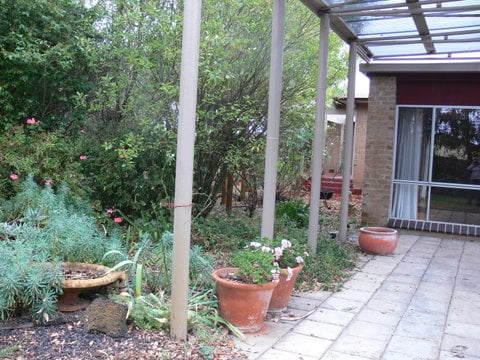
Early days – lots of self-seeding plants
Weedy, self-seeding plants
It has been a long and hard battle to control these seeding plants. Many plants that grow easily from seed will keep doing so. As well as the wandering tradescantia and other ‘lovelies’ which are so difficult to eradicate, we spend more time trying to manage this area than any other area of the now considerably bigger garden. Of course lawns will always be a weekly chore, but I love our lawns as a contrast within the design of our site.
The canopy has continued to grow with our care. This is a mixture of deciduous trees, gums, tall bottlebrush and weeping myrtles. It was the trees that so attracted me to our 1 acre property.
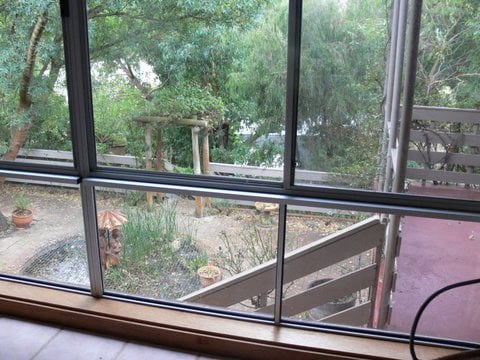
Early days – a thicket of maturing trees
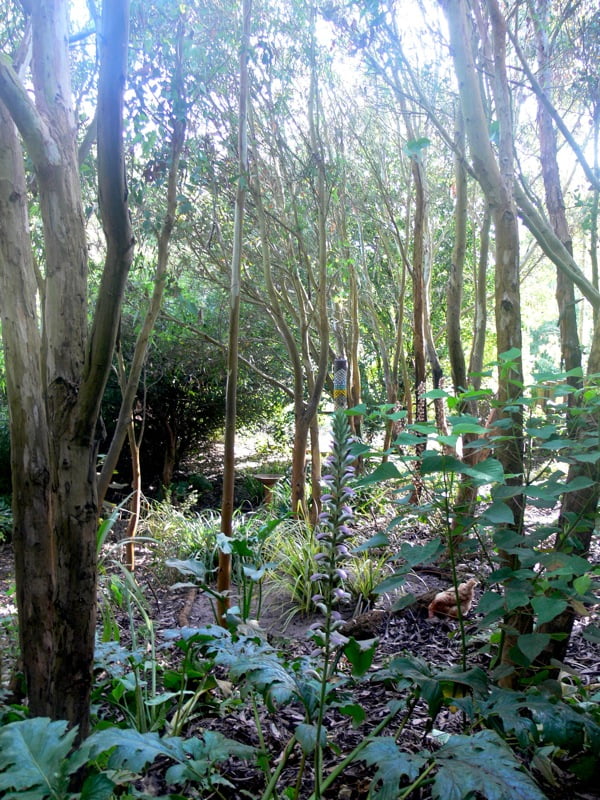
The garden today, showing the vertical effect of the eucalypt trunks
Over-planted tree canopy
These trees were over-planted and have had to be thinned. Each plant now performs better, given more room to expand both above ground and below.
Our ‘rainforest’, initially just a band of gums in the middle third of the site and predominantly Eucalyptus leucoxylon subsp. megalocarpa, was a real mess when we first started managing it, with a massed underplanting of Euphorbia characias subsp. wulfenii and other such weedy ‘gems’. There were even dead roses amongst the mix! We have since cleared this area, including raising the canopy of each gum so that you get that massed trunk effect of a rainforest. These strong lines stretching upwards also increase the vertical aspect of the garden. This has made the overall garden appear bigger and gives the middle, sloping section a real ‘wow’ effect as you enter it.
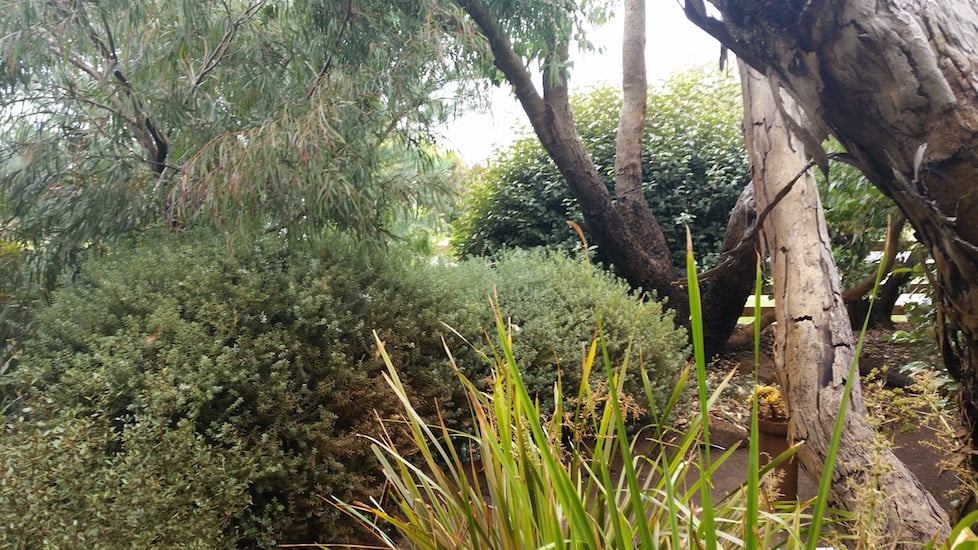
The garden today – mixed native shrubs and perennials under the tree canopy
Poorly designed steps
This middle section is on a slope; around a 60 degree drop at its worst. The previous owners made concrete steps going almost straight down, meaning that the steps are also really steep. It would have been far better to lengthen the drop by taking the path across the slope instead, working with the contours, and there is ample room for this. But in our desire to make Timandra a truly sustainable garden, and because of the significant cost and labour required to remove them, we have opted to keep them.
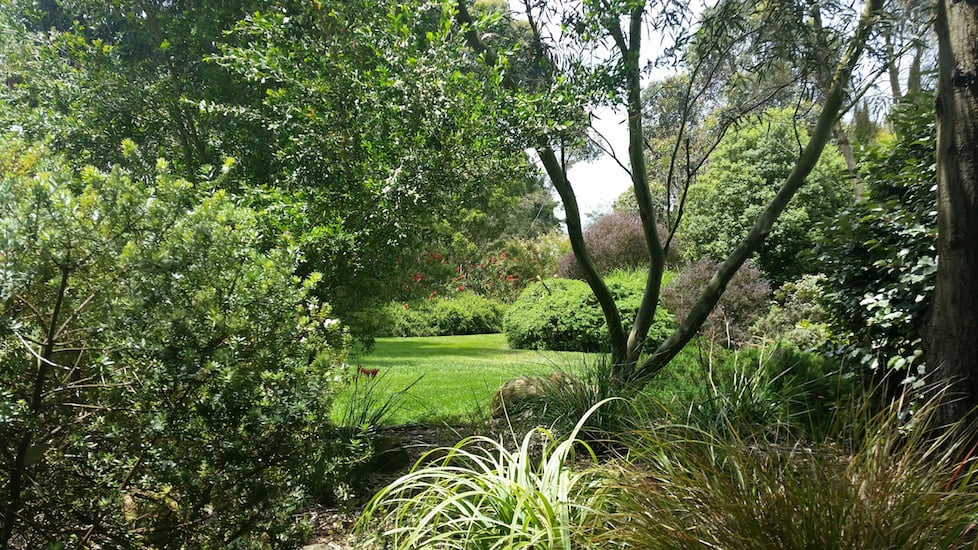
The garden today – the lawn area provides an open contrast to the heavily planted gardens
Creating diverse garden areas
Both the top and bottom thirds of the property are level. So as you exit our rainforest, the bottom space opens to a north facing area that is flat. After leaving the steeply sloping canopied garden, it creates a remarkably different experience, as if you are entering a completely new garden. You can catch glimpses of it from the path leading to this bottom garden, but this new area is so different that it often causes comment by visitors.

The garden today – lawn area in the lower garden
There is lawn here for a start, similar to the top or front garden, but the top area is largely hidden from view until you enter it. This bottom lawn encircles a central garden, with gardens surrounding the lawn on each side as well. These lateral gardens have meandering paths through them, which also found throughout the rest of the garden.

The garden today – inviting paths meander through the garden beds
Children in particular love meandering paths. Paths help to break up a wide expanse of garden, creating more interest to viewers. And when you have big trees, as in Timandra, these paths enable tree roots to grow unhindered from competition.
Managing large trees
Because of the need to have windbreaks on the north-east, north and north-western boundaries, the previous owners planted trees. But they have planted whoppers, including Eucalyptus globulus and Eucalyptus grandis. And, of course, they are almost under a major power line that annually warrants heated discussion with tree choppers directed to eradicate all growth anywhere near the lines. As a horticulturist, one who aims to retain trees in peak health, I have managed to get my way about how the trees are pruned. But as soon as our property changes hands, I feel that these beauties will be doomed. Why do people plant such big trees without thought?
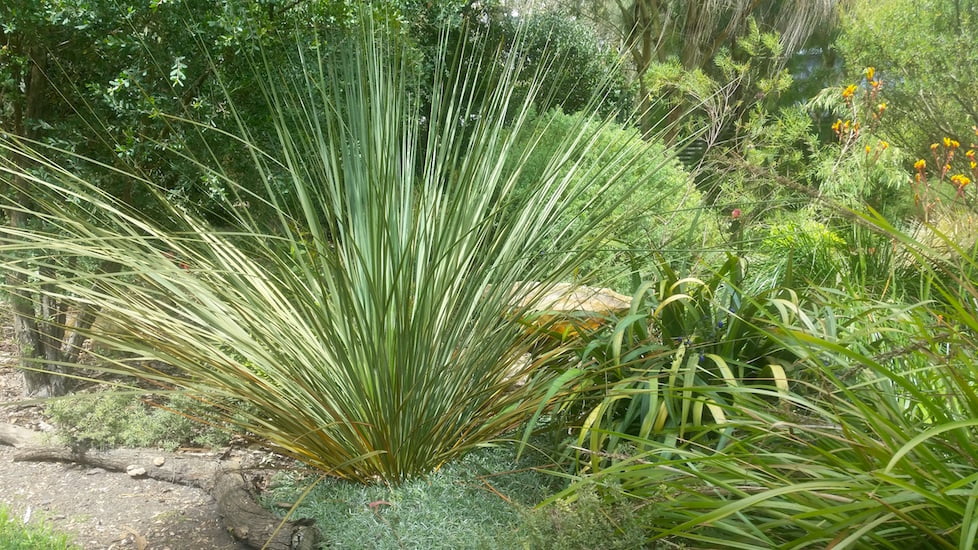
The garden today, full of interesting textures and form
Selecting plants for both shade and sun
Having very big trees on the northern boundaries in a southern hemisphere garden has a considerable effect on the design and plant selection. Throughout winter, the garden south of the trees is shrouded in darkness. But in summer when the sun is much higher in the sky, many of these plants are exposed to a lot of western sun. The design and plant selection here in this seasonally shaded and exposed area has meant lots of research and trial and error but, surprisingly they all work. I would never consider removing these majestic trees, despite the problems I have had to solve and they are now well integrated into the garden.
The large trees were in the bottom space when we bought Timandra, and we know that most of this bottom garden was used to house large earthworks machinery belonging to the former owners. So we have rubbish left by such machines, including diesel fuel and oil spills and we find nuts, bolts, rusted metal and so-on regularly in this area. I’m sure that this affects plant viability in this part of the garden. This is why knowing the history of a site can be so important to the success of a garden.
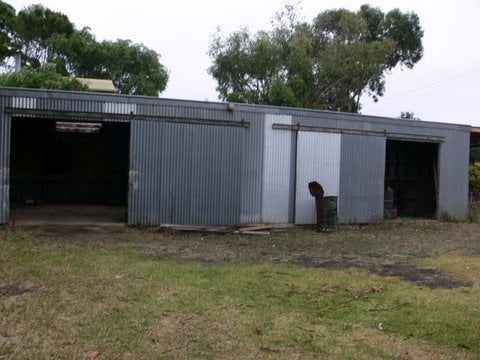
Early days – old machinery sheds in the lower garden
Respecting the history of the site
Knowing this history of the site, I have added odd sculptures around this lowest area to reflect its mechanical past. Many of these idiosyncratic pieces have come from our local recycling yard and from scrounging through similar junk yards as I travel.
We have also used remnants of our former fence that had the property’s street numbers on them. This to me, is a very important design element in all gardens that I design – to include part of the site’s history within its design. But it needs to be quirky, not kitsch; there is an enormous difference. If you are unsure of the difference, then steer clear.
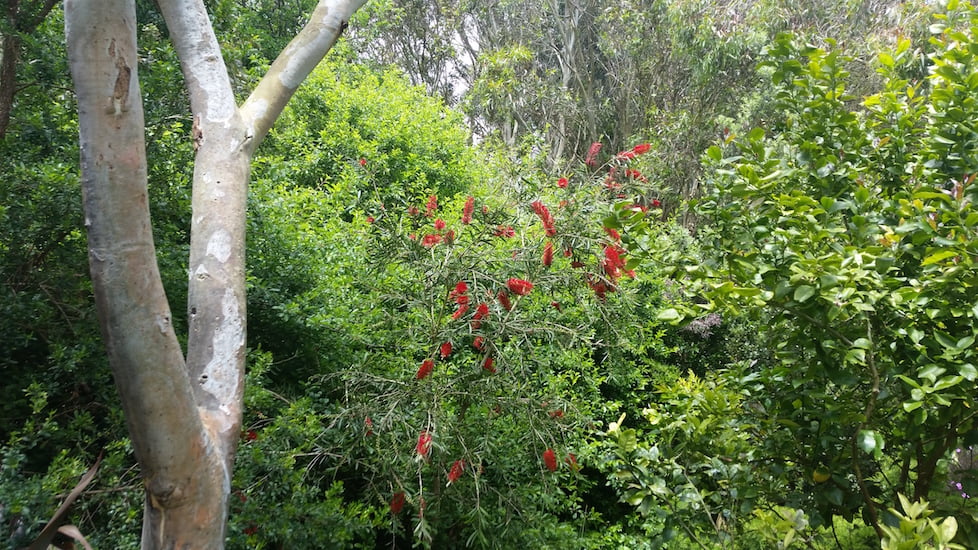
The garden today, filled with ‘bush tucker food’ for native animals and birds
Bush tucker for native wildlife
Timandra has changed enormously since came here. Gone are the gaudy, flowery plants of its former owners. It is now a garden of serenity. It is a haven for an enormous range of resident and migratory birds and our furry friends, the koalas. My former gardens, all in South Australia, were composed of mostly exotic plants. I am now finding that Australian native plants gives so much more intense satisfaction to me, because of the added joy of how they benefit our local the wildlife. We provide plenty of water, but no additional food as there is an ample supply of natural food for a many different fauna – we don’t need to artificially feed them.
